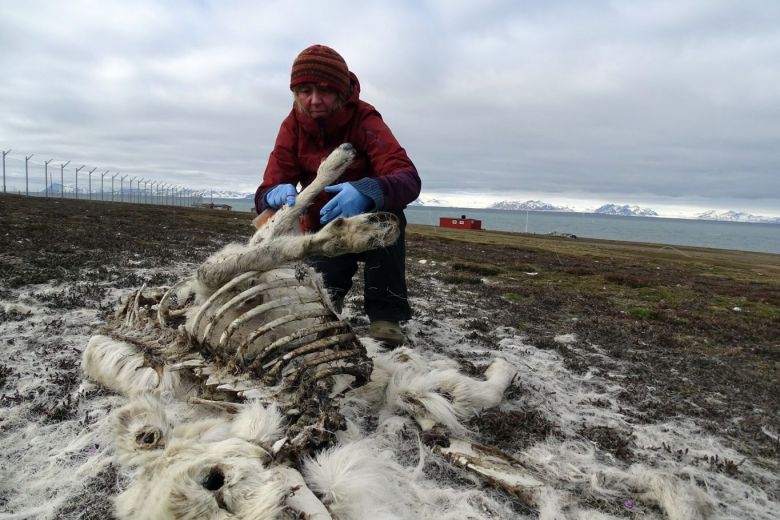挪威国营广播机构NRK周六(27日)报道,挪威研究人员在挪威斯瓦尔巴的北极群岛发现超过200头已经饿死的驯鹿。
挪威极地研究所三名研究员说,气候的变化以及粮食的缺乏是导致这场悲剧发生的原因,而且这是前所未见的规模。
研究员佩特森说:“看到那么多动物死亡是很恐怖的。这是气候变化对环境造成影响的一个可怕例子。”
据佩特森,12月发生在斯瓦尔巴的豪雨让这些动物在寻找食物时,非常困难。
她相信,虽然这些驯鹿远离文明社会,也不受人类干扰,但它们的死亡却显示,一个较为温和的气候对这些野生动物可造成巨大影响。
Some 200 reindeer have been found dead from starvation in the Arctic archipelago Svalbard, an unusually high number, the Norwegian Polar Institute said Monday (July 28), pointing the finger at climate change.
During their annual census of the wild reindeer population on the group of islands in the Arctic ocean, about 1,200 kilometres from the North Pole, three researchers from the polar institute identified around 200 deer carcasses believed to have starved to death last winter.
Ashild Onvik Pedersen, head of the census, said the “high degree of mortality” was a consequence of climate change, which according to climate scientists, is happening twice as fast in the Arctic as the rest of the world.
“Climate change is making it rain much more. The rain falls on the snow and forms a layer of ice on the tundra, making grazing conditions very poor for animals,” she told AFP.
In winter, Svalbard reindeer find vegetation in the snow using their hooves, but alternating freezing and thawing periods can create layers of impenetrable ice, depriving the reindeers of nourishment.
According to Onvik Pedersen, a comparable death toll has only been recorded once before – after the winter of 2007-2008 – since monitoring of the reindeer population started 40 years ago.
The increased mortality is also due in part to a significant increase in the number of reindeer in the Norwegian archipelago. That is partly thanks to climate change and the warmer summers, meaning more individuals compete in the same grazing areas.
Since the 1980s, the number of reindeer has doubled in Svalbard, and now stands at around 22,000, according to the Norwegian Polar Institute.
Source: Zaobao / The Straits Times




